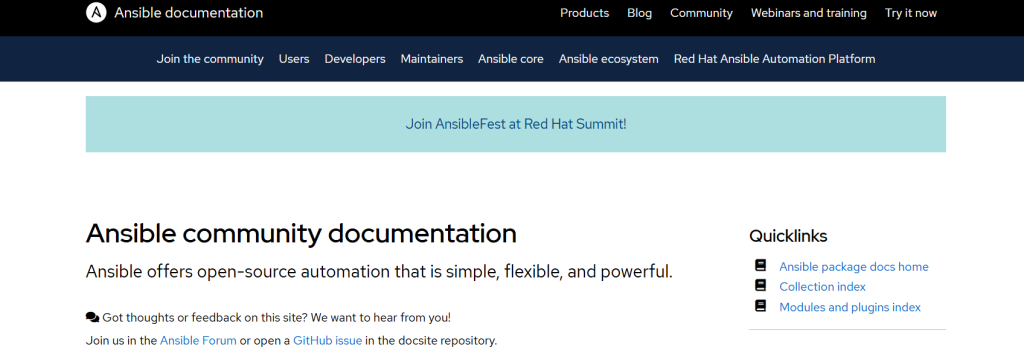Among the IT automation community, Ansible ranks among the favorites among system administrators, DevOps engineers, and cloud experts in general. Of the simplest yet most potent tool Ansible has up its sleeve, the ping module is among the easiest and yet most impressive ones. You’re either a complete newbie to Ansible or you’re still grappling with figuring out what in the world “ping” actually does here; you’re welcome.
Here in this article, we’re going to unwrap every and any detail of ansible ping module from basics to advanced level use cases. We’re going to deconstruct it in simple language and real-time examples so you not just learn how to do it but when and why you should do it.
Let’s start then.
What is ansible ping?

First off don’t be misled by the name. The ansible ping doesn’t send ICMP echo requests as the old ping command on Windows or Linux does. It’s a common myth.
What the ansible ping actually does is check the connectivity between the Ansible control node and the managed nodes. It checks whether the Ansible can log in to the remote server, most likely through SSH, and execute Python code.
- If you’re executing on Windows boxes, Ansible defaults to WinRM instead.
- So ansible ping should be considered a sanity and connectivity test, not a network debugging tool.
Why is ansible ping significant?
Consider pushing a config out to 200 servers and discovering 20 are not reachable, don’t have Python, or listen on an alternate SSH port. That’s a recipe for a pipeline to fail.
Get exclusive access to all things tech-savvy, and be the first to receive
the latest updates directly in your inbox.
That’s where ansible ping comes in.
Here’s what it assists you in checking:
- SSH connectivity (or WinRM on Windows)
- Auth credentials (key, username, password)
- Python availability (usually needed by the majority of modules)
- Sudo privilege checks (if needed)
- Inventory syntax issues or typos
Basically, it’s your initial defense before you run any playbooks.
Setting Up: Ansible and Inventory
There are a couple of things that you must have before you start using ansible ping:
- Ansible installed on your control node (your local machine in all likelihood, or a CI/CD runner)
- SSH to your remote servers
- A valid inventory file listing all your servers
Here's a simple inventory example at /etc/ansible/hosts:[webservers]<br>192.168.1.101<br>192.168.1.102<br>[dbservers]<br>192.168.1.201Alternatively, define it inline using the -i flag:ansible all -i "192.168.1.101," -m ping -u usernameNote: If you pass a single host inline, never leave off the comma (.). Ansible treats it as a group name otherwise.
Running Your First Ansible Ping Command
Let’s try it out on all hosts in your inventory.
ansible all -m pingHere’s what this command does:
all targets all groups and hosts in your inventory.
-m ping tells Ansible to use the ping module.
If everything is working, you’ll get an output like this:

192.168.1.101 | SUCCESS => {<br>"changed": false,<br>"ping": "pong"<br>}“pong” is Ansible’s cute way of saying “I can reach this host, and everything looks good.”
Authentication: How Ansible Logs In
By default, Ansible uses the current system user to log in over SSH. But in most real-world scenarios, you’ll need to specify the user explicitly using the -u flag.
ansible all -m ping -u ubuntuIf your host requires a private key for SSH, specify it like this:
ansible all -m ping -u ubuntu --private-key ~/.ssh/id_rsaOr, if you’re prompted to use password authentication (less secure but sometimes needed):
ansible all -m ping -u ubuntu --ask-passYou can also use this with --become and --ask-become-pass if the user needs sudo:
ansible all -m ping -u ubuntu --ask-pass --become --ask-become-passWhen the Ping Fails: Troubleshooting Guide
Let’s explore common reasons why ansible ping would fail and how to resolve them.
Permission Denied
Permission denied (publickey).Cause: SSH key inaccessible or incorrect user.
Solution:
Pass the --private-key option
Make sure to copy SSH key to target host
Check correct username specified with -u
Python Not Available on Target Host
module_stderr: "env: python: No such file or directory"Cause: Python is not installed on the remote host.
Solution:
Manually install Python using apt install python3 or yum install python3
Pass interpreter with ansible_python_interpreter
Example:
[webservers]<br>192.168.1.101 ansible_python_interpreter=/usr/bin/python3Host Unreachable
UNREACHABLE! => { "changed": false, "msg": "Failed to connect"}Cause: Host down, firewall blocking SSH, or improper IP.
Fix:
- Ping host with system ping
- Inspect firewall (e.g., ufw, iptables, AWS security groups)
- Inspect IP in inventory
With ping and Host Groups and Patterns you don’t necessarily need to ping every host. You can ping a host group or host pattern:
<code>ansible webservers -m ping</code>Or a specific host:
ansible 192.168.1.101 -m ping -u rootYou can even use wildcard matching:
ansible 'web*' -m pingThis is convenient if you have a big infrastructure and you need to limit your checks.
Utilizing ping Within a Playbook
The ping module can be utilized within a playbook too. This is very convenient for automation and CI/CD pipelines.
Here is an example playbook (ping-playbook.yml):
name: Ping all servers<br>hosts: all<br>gather_facts: no tasks:<br>name: Test connection to hosts<br>ansible.builtin.ping:Run it with:
ansible-playbook ping-playbook.ymlPlaybooks provide you a little more control, such as conditionals and exceptions.
Intermediate to Advanced: Ping with Other Ports, Types of Connections
Suppose your SSH server is on some other port—2222 for example.
In your inventory:
[customport]<br>192.168.1.50 ansible_port=2222Or directly on the command line:
ansible 192.168.1.50 -m ping -u admin -e 'ansible_port=2222'You can modify the type of connection also through ansible_connection. For local case for example:
[local]<br>127.0.0.1 ansible_connection=localReal-Life Scenarios and Use Cases
- Precheck CI/CD Pipeline
As a pre-deploy sanity check step, before deploying code to servers via Jenkins, GitLab CI, or GitHub Actions, utilize ansible ping. - Health Monitoring in Custom Scripts
Write a script that pings servers on a daily basis and notifies you if a host is down. - Troubleshooting New Servers
Create a new VM? Add to inventory and execute ansible ping to ensure SSH, Python, and user configuration. - AWS Auto Scaling Validation
In a changing cloud setup, use ansible dynamic inventories and ansible ping so that all the EC2 instances are accessible ahead of updates.
Tips for Better Usage
- Validate connectivity prior to running large playbooks.
- Use ansible ping alongside tags in playbooks to enable control of what runs.
- Take advantage of Ansible Vault in order to encrypt credentials if necessary.
- Use -o for more tidy one-line output (scripting-friendly).
- Use ansible-inventory –list to validate which hosts are targeted.
Final Words
The ansible ping module may look small and simple, but it’s arguably one of the most important tools in your Ansible toolkit. Whether you’re managing two servers or two hundred, ping helps validate that the whole Ansible ecosystem from SSH keys to Python interpreters is working like a well-oiled machine.
And once you’ve gotten into the habit of practicing on it consistently, it’ll be your top priority to use before every rollout, change, or debug session.
FAQs
What is the ansible ping command?
ansible ping is a test to see if Ansible can make a successful connection to the target machine(s). It does not utilize the standard ICMP ping but instead tests SSH connectivity, auth, and availability of Python on the remote system.
Does ansible ping utilize ICMP like the standard ping command?
No, it does not. Contrary to its name, ansible ping doesn’t actually send ICMP echo requests. It just tests whether Ansible can log into the host and execute a small Python command to make sure everything is in order for more automation.
What does “ping”: “pong” mean?
It indicates that the connection was successful. Ansible successfully connected to the host, authenticated, and ran a simple Python command. The “ping”: “pong” message is Ansible’s saying “all good here.



